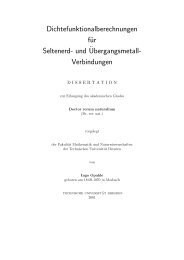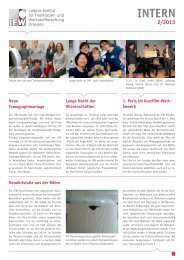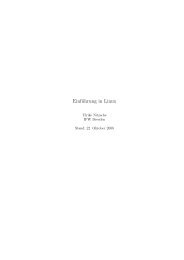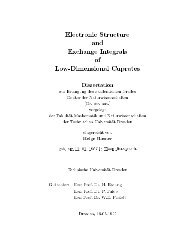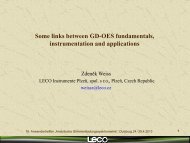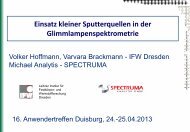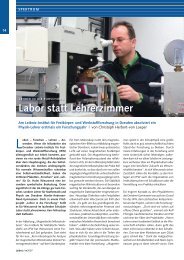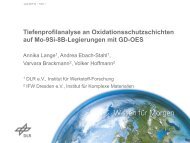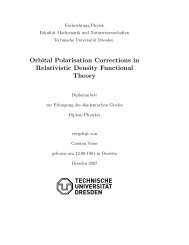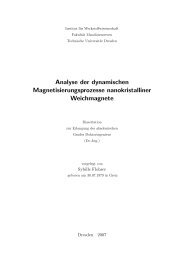ALBERTO BOLLERO REAL
ALBERTO BOLLERO REAL
ALBERTO BOLLERO REAL
Create successful ePaper yourself
Turn your PDF publications into a flip-book with our unique Google optimized e-Paper software.
2.2 Magnetic properties<br />
have a critical single-domain particle size of d c = 200-300 nm [7].<br />
Because in R-T intermetallic compounds the T-T interactions dominate over R-T and<br />
R-R interactions, the balance between exchange energy and anisotropy energy, at any<br />
position in the wall, may thus be considered by taking the T moments as a reference<br />
(corresponding angle from the easy axis). The anisotropy energy for these alloys must<br />
include the R anisotropy and exchange interactions in addition to the T anisotropy.<br />
In fine-grained polycrystalline materials with grain sizes sufficiently less than d c the<br />
grains will be single domain and Bloch walls cannot develop. However, due to the<br />
magnetic interaction (exchange as well as magnetostatic) across the grain boundaries,<br />
competitive magnetic phenomena called interaction domains will occur [6,8-11]. The<br />
contrast and the visibility of the interaction domains is increased if the polycrystalline<br />
material is well textured [3,12,13]. Figure 2.5 shows, as an example, the Kerr image<br />
corresponding to a die-upset melt-spun NdFeB sample.<br />
15 µm<br />
Fig. 2.5: Kerr image showing the domains on a die-upset melt-spun NdFeB sample (MQU-<br />
F), with the c-axis perpendicular to the imaging plane (courtesy O. Gutfleisch).<br />
2.2.5 Origin of coercivity<br />
Once the magnetic domains are aligned along the direction of an applied magnetic<br />
field, the formation of reversed domains is necessary in order to demagnetise the material.<br />
An upper limit of the coercivity is the anisotropy field H a (Eq. (2.6)). However, the<br />
coercivity values of real materials are much less than the corresponding theoretical<br />
maximum values (Brown’s paradox). This is because the formation of reverse domains is a<br />
13



